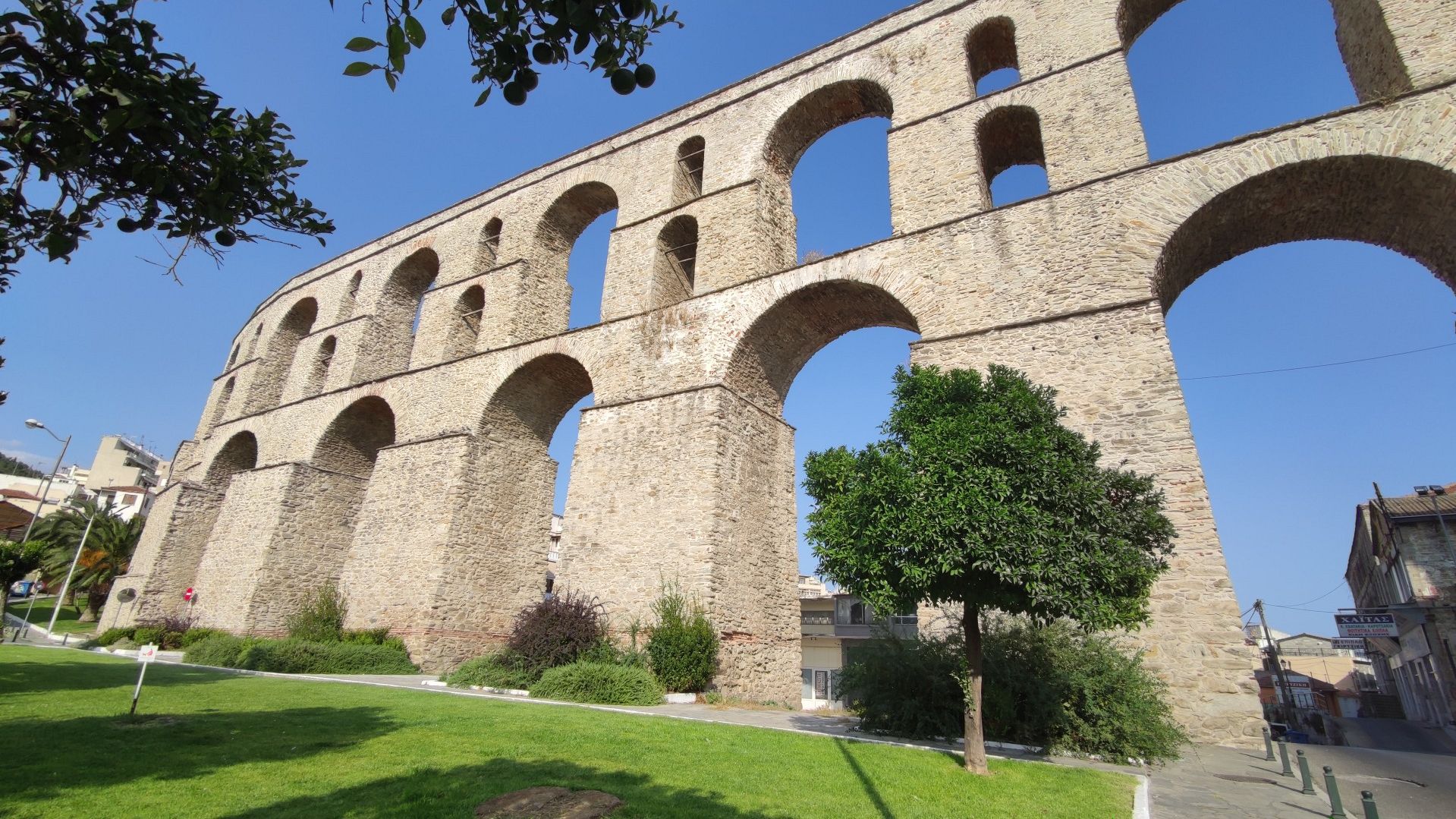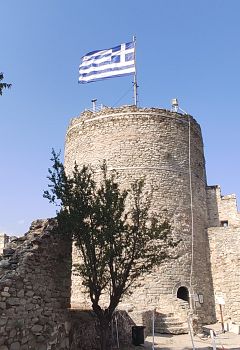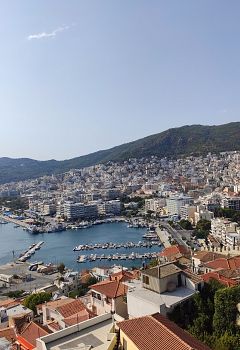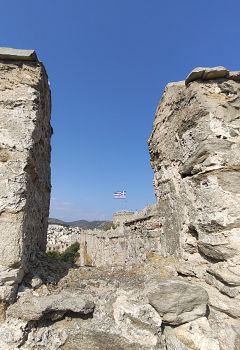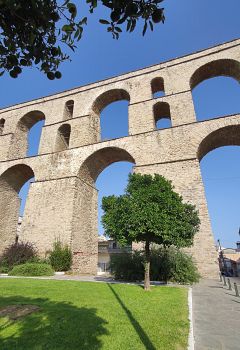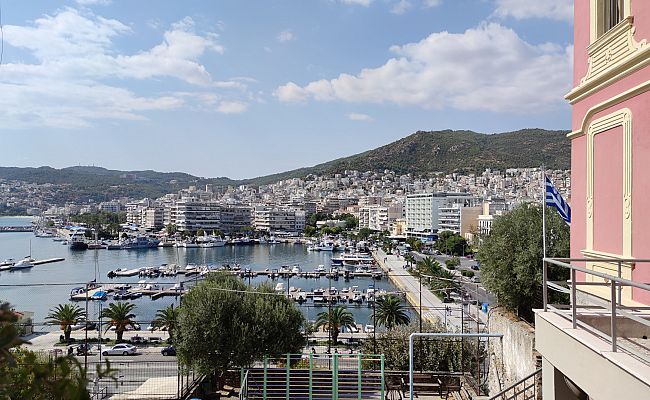Located in the north-east of Greece, the city of Kavala invites you on a journey through the eras: from ancient times to the times of Turkish rule. Regardless of the season, it will captivate with architecture and a special character that distinguishes Kavala from all other cities in Greece. What to see in Kavala? Let's get acquainted with the main attractions.
Fortress of Kavala
From the 5th century BC Kavala has always been a fortified city. Its imposing fortress was rebuilt and fortified many times, especially under the Romans and Byzantines, who even installed the city's water supply system here. It acquired its final form under the Turks - they carried out a reconstruction in 1425. The fortress complex was fortified with bastions and towers, surrounded by a high wall rising along steep slopes, and also had several gates through which access to the inner territory was possible.
Today the fortress is the hallmark of the city. From its height, the most beautiful views of Kavala open up. The fortress retained the central round, polygonal and two square towers, bastions, a powder store, a prison, water cisterns and a theater for summer events. You can climb the round tower, this is the highest point of the city and the panoramas there are mesmerizing. There is also a cafe on the territory of the fortress.
Aqueduct
The aqueduct of Kavala (also known as Kamares) may have been in the city as early as Roman times. But the modern building dates back to the 16th century - it appeared on the site of the Byzantine aqueduct, which the Turks decided to improve and strengthen. The ancient monument with arches is perfectly preserved. It connects the modern and historical parts of Kavala and stretches for 280 meters. The height of the aqueduct is 25 meters.
An interesting fact: until 1911, the Kamares aqueduct was still used to supply Kavala with water.
Imaret
Imaret in Kavala is a fine example of Ottoman architecture. The building was built as an educational center in 1817 by order of Mohammed (Mehmet) Ali Pasha. In parallel, the Imarets in the Ottoman Empire served as a caravanserai and charitable institutions in which they fed all those in need. Until 1902, a religious school was located here. After the population exchange between Greece and Turkey in the 1920s, Greek refugees from Anatolia lived in the imaret building. Today, Kavala's imaret is not only one of the most beautiful sights of the city, but also a luxurious hotel with a hammam, colorful rooms and a restaurant.
Archaeological Museum of Kavala
The Museum of Archeology of Kavala is the largest in Eastern Macedonia. In it, the history of the city and the entire nome of Kavala is presented at a glance: all historical periods and eras are covered. Here is just a small part of what can be seen in the museum:
- Finds from ancient Amphipolis, including busts, tombstones and jewelry;
- Sarcophagi;
- Large collection of ancient coins;
- Collection of amphorae;
- Finds from Neapolis;
- Collection of prehistoric objects;
- Finds from sanctuaries, including ritual figurines;
- Architectural details of temples.
The Kavala Museum has a shop where you can buy memorable souvenirs.
Mehmet Ali's house
The residence of Mehmet Ali, a native of Kavala and an Egyptian pasha, is one of the most authentic and well-preserved examples of 18th century Ottoman architecture in Greece. In its southern part, you can visit the quarters for men, the pasha's private room and rooms for receiving guests. In the northern part of the residence there is a harem, where women's quarters and a hammam are located. The elegant mansion has been perfectly preserved to this day and rightfully adorns Old Kavala. Today the house has been turned into a museum. In addition to visiting historical interiors, here you can enjoy views of the port of Kavala.
Town Hall of Kavala
The building, which today houses the municipality of Kavala, is unusual not only for the city, but for the whole of Greece. Its architectural style stands out from other buildings and is more reminiscent of European towers. The town hall was built in the late 1890s in the style of medieval castles with Gothic arches on balconies and towers, battlements and decorative elements. The mansion belonged to one of the tobacco magnates - as you know, in the past Kavala was the center of tobacco production in Europe.
Tobacco Museum
As a continuation of the theme of the tobacco history of Kavala, a visit to the Tobacco Museum. In many ways, it was the sale of tobacco that allowed the city to make a leap in development. The thematic museum will tell about this period of Kavala's history. Among its exhibits are machines that were used in production and processing, photographs, archival documents, paintings, furniture, rare tobacco samples, personal belongings of influential merchants and many other items.
Khalil Bey Mosque
The bright red mosque is another superb example of oriental architecture in Kavala. Most likely, it appeared in the city in the middle of the 16th century, when a large-scale reconstruction of Kavala was carried out. Previously, a Byzantine church was located on the site of the mosque, the ruins of which can be viewed through the glass floor. In the 20th century, the mosque of Khalil Bey served as the building of a school for girls, and then the city's philharmonic orchestra was housed within its walls. Today, cultural events are regularly held inside the mosque.
Municipal Museum
The Municipal Museum is located in a two-story neoclassical building in the center of Kavala. It is famous for its extensive collection of different thematic groups. In the halls of the museum you can see a collection of modern art (more than 100 paintings by famous Greek and dozens of works by local artists), stuffed birds that live in the Kavala nome, sculptures, a collection of folklore with folk costumes, jewelry, embroidery, household items, tools, gramophones and utensils inhabitants of the countryside of the 18th-early 20th centuries. It also houses a large archive of historical photographs of Kavala.
Please note: Kavala is a city that is interesting not only for its historical heritage, but also for its beaches. Do not miss the opportunity to relax on the coast of Rapsani, Kalamitsa, Batis and Ammolofi. All of them are located in the vicinity of the city and are awarded the Blue Flag.
